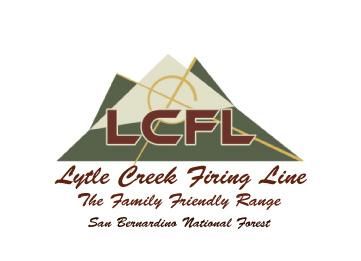10 Strategies for Staying Safe on Your Next Motorcycle Ride
- Home
- Journal
- Safe Motorcycle Riding Tips
- 10 Strategies for Staying Safe on Your Next Motorcycle Ride
Riding a motorcycle can be an exhilarating experience, but riding on two wheels also comes with risks, even for experienced riders who follow traffic rules. According to the Insurance Institute for Highway Safety report of 2009, 48% of motorcycle rider fatalities were caused due to excessive speeds, with bikers being more than 30 times at risk of dying in a traffic wreck even when wearing the right gear and despite taking a riding course.
According to The Hurt Report published by the U.S. Department of Transportation’s National Highway Traffic and Safety Administration in 1981:
- The majority of motorcycle accidents involve collisions with other vehicles, usually passenger cars, with no inkling about motorcycle safety tips.
- A significant number of motorcycle accidents occur at intersections, and many of these are caused by another driver failing to see the motorcycle change lanes or hear the approaching motorcycle engine.
- Alcohol use is a factor in a large percentage of fatal motorcycle accidents.
- Helmets are effective in reducing the risk of head injury in motorcycle accidents.
- The vast majority of motorcycle accidents involve riders who have little or no formal training.
Taking the necessary precautions to stay safe on the road is important for a rider. Having ABS brakes means nothing if you don’t know how to deal with the clipboard-related topics of staying alive, let alone checking your oil. Make sure you brake lights and follow traffic rules, for starters. Get a basic first aid kit for your riding gear and saddlebags as well. Having loud pipes and a horn can also come in handy when traveling on rides, especially in crowded streets with low light coverage in a territory you are unfamiliar with at night. You have to be careful and obey the speed limits, and know how to deal with dangerous obstacles, or you too could go missing over a guard rail, left for dead.
10 Motorcycle Safety Tips in Detail
Here are 10 tips for staying safe on your next adventurous motorcycle ride and help you stay safe on your next motorcycle ride:
1. Wear Proper Protective Gear
Wear protective gear like a motorcycle helmet, for example, can help protect the motorcycle rider in the event of an accident. Use good judgment, spend more if necessary, and double-check to make sure you use bright colors to make you visible on the open road. The right protective gear for motorcycle owners includes a full-face helmet, jacket, gloves, and boots. Consider wearing padded knee leathers or leather chaps over your jeans or riding pants. Even when it’s hot outside, wearing leathers is always smarter than wearing a t-shirt as your sole protection. Make sure your riding gear fits properly and is in good condition to help your body absorb a traffic accident when another vehicle violates transportation and road traffic rules.
2. Check Your Bike and Tire Pressure
Driving motorcycles can be dangerous and is more akin to piloting a fighter aircraft. First, you need to account for both cold and warm weather and how that affects the suspension and tire pressure. Before every ride, quickly check your bike to avoid creating a hazard to yourself and other drivers. Make sure your brakes, lights, and turn signals are all working properly. Check your tires for proper pressure and any signs of wear and tire pressure.
No matter how great your anti-lock brakes, safety gear, and other motorcycle safety precautions are, low tire pressure can lead to unpredictable riding situations like rain or snow drifts, increasing the risk of road hazards and motorcycle deaths, especially when riders cross railroad tracks or run over grooves in the asphalt. Flipping over the handlebars can mean death for a motorcyclist, no matter how much protection they are wearing when they hit the ground.
3. Plan Your Route for Optimal Highway Safety
Plan your route in advance and let someone know where you’ll be going. Avoid roads known for heavy traffic or having a high accident rate. Planning your motorcycle route in advance and always using your mirrors is crucial to ensure optimal highway safety.
Here are some tips to help you plan your route and stay safe while riding:
- Research your route: Before hitting the road, research your route thoroughly. Check for any construction, road closures, or other potential hazards that could affect your ride. If there is road construction, gravel and other substances could lead to traction problems, for example. So inspect user chat forums and other sources to make sure you don’t throttle through a dangerous construction zone. Use online maps and GPS systems to find the best and safest route, and consider riding a different day if there are too many critical bumps in the road along the way for you or your riding group.
- Consider traffic: Traffic can be a major safety concern for motorcyclists. Plan your route around high-traffic areas, and try to avoid riding during rush hour or in busy urban areas.
- Look for scenic roads: Scenic roads are often less busy and provide better visibility and riding conditions. Look for roads that offer great views and interesting terrain to make your ride more enjoyable.
- Check weather conditions: Weather conditions can greatly impact motorcycle safety. Before heading out, check the weather forecast for your route and plan accordingly. If there is rain or other inclement weather, adjust your speed and take extra precautions to stay safe and make it back home safe for your family. Don’t become a Department of Transportation casualty report by stating out of inclement weather.
- Plan rest stops: Riding a motorcycle for long periods of time can be tiring and increase the risk of accidents. Plan rest stops along your route to give yourself a break and stretch your legs. Being relaxed can definitely help avoid steering into a crash while riding bikes.
- Pack essentials: Make sure to pack essential items such as a first-aid kit, water, and snacks. Also, wear appropriate safety gear, including a helmet, gloves, and protective clothing.
- Share your route: Let someone know your planned route and the estimated time of arrival. This will ensure that someone knows where you are and can send help if necessary.
By following these tips and staying out of the other drivers blind spots, you can plan a safe and enjoyable, fuel-efficient motorcycle ride. Remember, safety should always be your top priority when riding, even among the most experienced motorcycle riders, with a penchant for staying alive by paying attention. If you have ridden anywhere in a city like LA, you already know you must watch your six, not just cars. Drugged-out homeless people and BLM rioters have attacked bikers, so make sure you have fun by staying away from these known dangers as well, or at least maintain a safe distance along the pavement to be able to escape. Self-defense with a gun is almost impossible in CA due to their gun transportation laws. It may be better to stay out of the California street riding scene altogether.
4. Ride Defensively
Assume that other drivers on the road don’t see you, and always be prepared to take evasive action. Keep a safe following distance and scan the road ahead for potential hazards.
5. Be Mindful of Road Conditions
Road conditions can change quickly, especially in wet or icy weather. Wearing a leather jacket can help you stay warm and also lessen road rash if you fall or get hit. Be aware of the road surface and adjust your speed and handling accordingly.
6. Avoid Distractions
Distracted driving is a leading cause of accidents. Avoid texting, talking on the phone, or any other activity that takes your attention away from the road.
7. Follow Traffic Laws
Traffic laws are in place for a reason, such as traffic rules such as using a DOT-approved helmet. Follow the speed limit, obey traffic signals, and always use your turn signals. These safety tips can help a motorcycle rider avoid death or road rash.
8. Stay Sober Motorcycle Riding
Drugs and alcohol impair your ability to ride safely. Never ride under the influence of drugs or alcohol. A simple drink or hitting off a marijuana joint can make you forget to use your turn signal, making you road pizza after getting hit by cars who were merely taking appropriate actions that a blinker or hand signals by the rider could have obviated.
Changing lanes on a motorcycle, as well as simply moving down the lane or lane splitting, requires utmost care and attention, and that is a harsh reality newer riders must understand! Even a parking lot can be deadly for a biker at low speeds.
9. Take a Safety Course for Motorcycle Riders
Riding a motorcycle requires skill backed by the foundation of a reputable riding safety course. A safety course can teach you valuable skills and techniques to help you stay safe on the road. Look for a course that a reputable organization accredits.
10. Practice Defensive Riding
Don’t just try and stay in your comfort zone or assume you can always avoid a fender bender. Motorcycles are not protected by sheet metal and a roll cage like cars, trucks, or buses. And seatbelts are useless for a motorcycle, where they are required for a car. Defensive motorcycle riding also involves being aware of your surroundings and anticipating potential hazards. Practice defensive riding techniques and always wear goggles or a face shield to help you avoid accidents caused by bugs or debris getting into your eyes.
Conclusion – Staying Safe Motorcycle Riding Requires Vigilance
We hope these 10 top motorcycle helmet safety tips were helpful in keeping you from dying or experiencing brain injuries. Following these strategies can help reduce your risk of accidents with other vehicles and help you stay safe on your next motorcycle ride. Remember, safety should always be your top priority to avoid ending up in an emergency situation. We thank you again for helping vets with PTSD and cancer on our journey to a safer California on your chosen route.
Resources
General Stuff
Address
Paul Ehline Ehline Memorial Ride
3838 W Carson St.
Torrance, CA 90503
Phone : (310) 622-8719
© paulehlineride.org. All rights reserved.
Donations submitted through donation forms on PaulEhlineRide.Org are tax-deductible to the fullest extent allowed by U.S. and state laws. These will be in U.S. Federal Reserve Notes. Paul Ehline Memorial Ride™ is a U.S. nonprofit, tax-exempt charitable Section 501(c)(19) organization that benefits US Armed Forces veterans under the U.S. Internal Revenue Code. (Tax identification number 85-4040563.)





